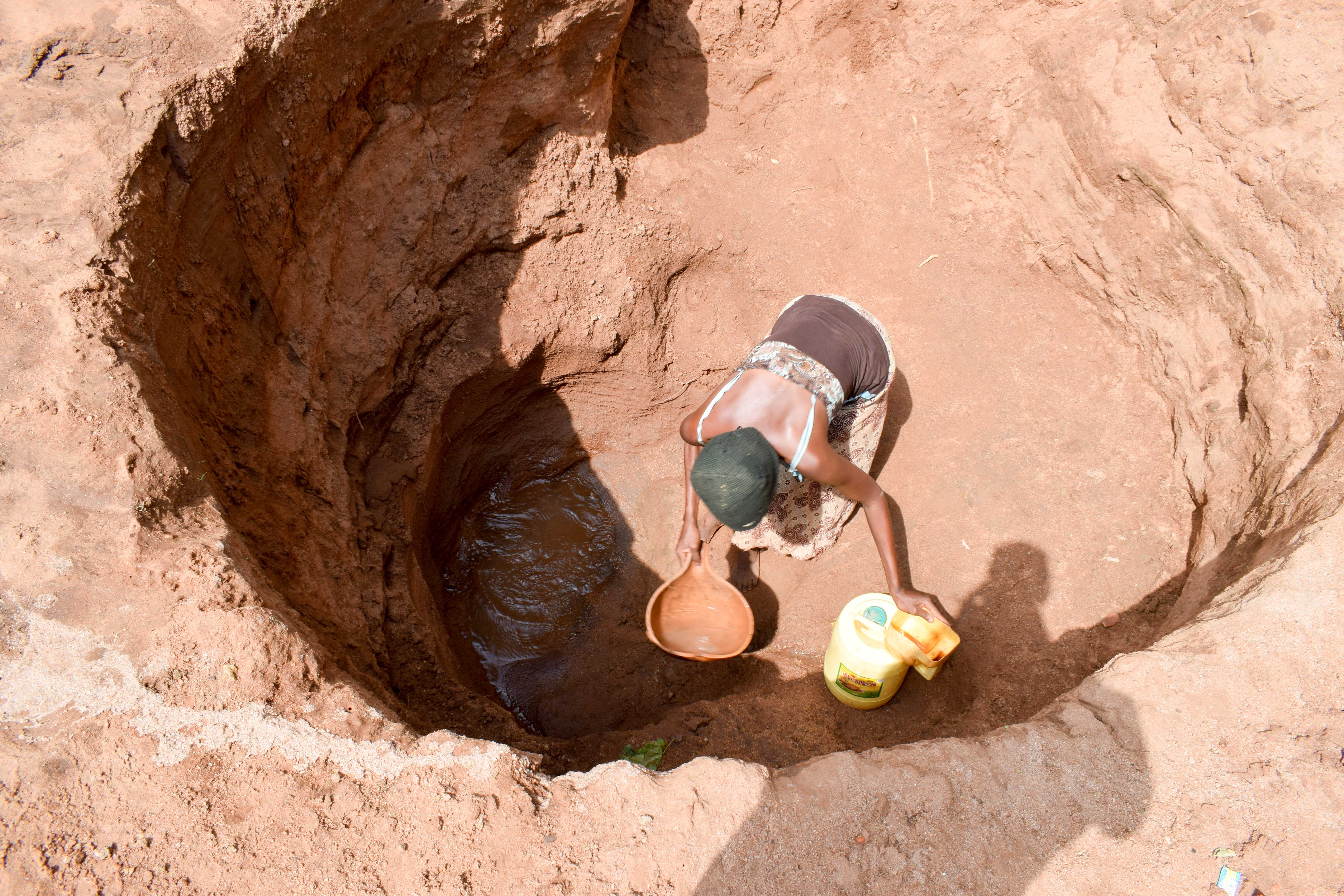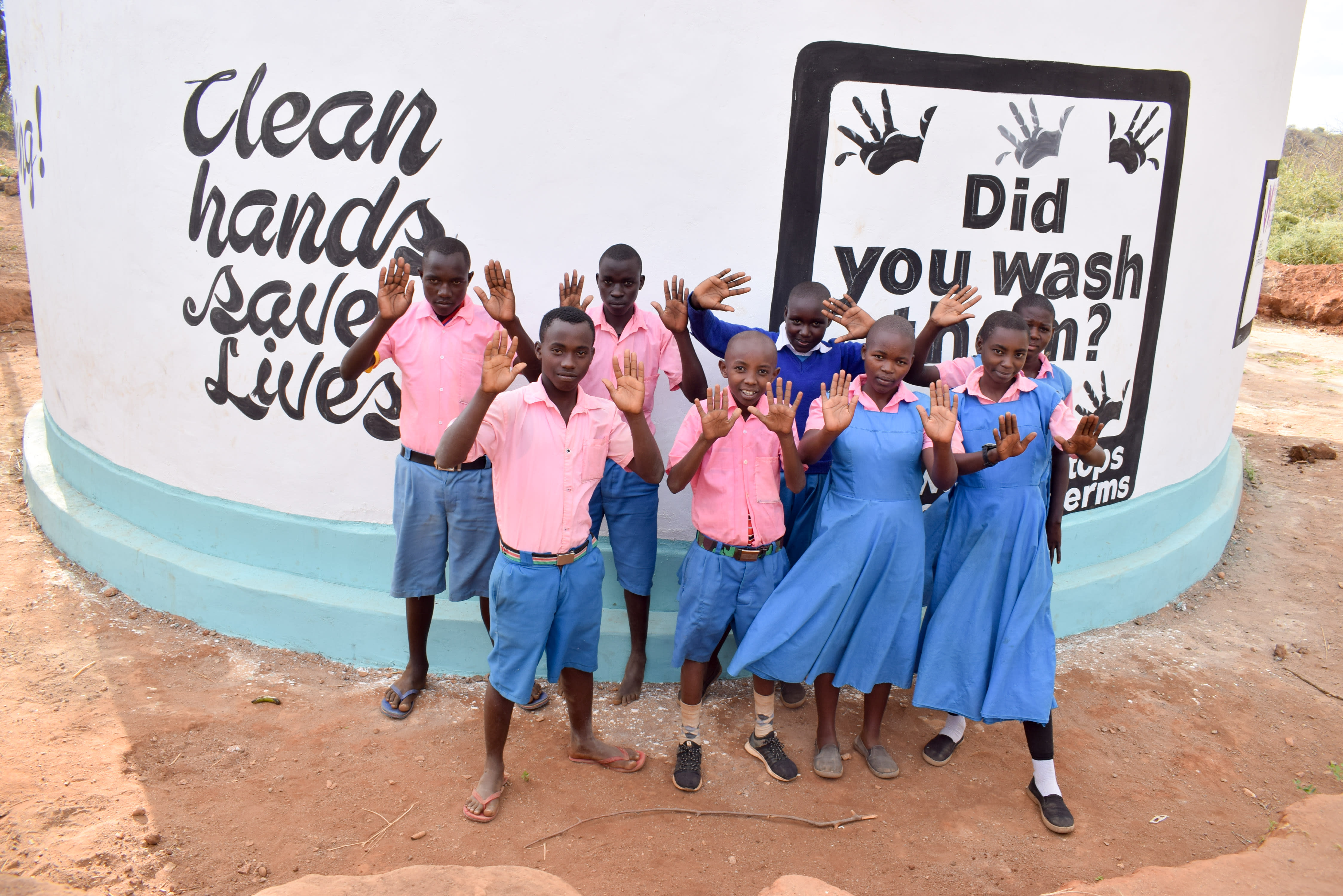Katuluni Primary School was started by the District Education Board, with its growth solely supported by parents. It now has eight classrooms, latrines, a staff room, and kitchen. Enrollment is 307, of which 157 are boys.
Students are expected to arrive by 7am to tackle their daily cleaning chores. Morning lessons start at 8:30am and go until 3:10pm. They need to stay after for a sport, and are normally released by 5pm.
Most students' parents are part of the Ndinesi Uu Self-Help Group, which works to address water and food scarcity in the area. They've witnessed how this has negatively impacted their children's learning at school, and have proposed a water solution.
Water
A concrete tank that could catch at least 20,000 liters of rainwater was built in the 1980s, but it has since been decommissioned.
Unfortunately, the quality of work could not withstand the test of time. Most of the time, these concrete tanks turn into storage for schools that lower their items through the dome hatch.
A plastic tank was donated soon after. This has the ability to collect up to 10,000 liters of rainwater. This water must be closely monitored by school administration to ensure there's enough drinking water. There's never enough water to accomplish anything else.
Sometimes, support staff and parents are asked to transport jerrycans of water to school. These women most often use donkeys to carry jerrycans of water from scoop holes dug in sandy riverbeds, like the one below.

Students carry water from here to school every morning, and sometimes parents have to gather extra to deliver throughout the day.
Sanitation
Deputy Headteacher Phillip Matiti told us that it's poor sanitation that's putting students at the greatest risk. Since there isn't enough water for cleaning, students are suffering from a horrendously dirty environment. He said that children often miss school because of diarrhea issues, and he is sure that this is because there isn't water for handwashing. The latrines are never washed either.
"Our state of hygiene and sanitation is presently below average, because of the water problems in our area. In the case we get water, we will change things for the better," he said.
Here’s what we’re going to do about it:
Training
Students and staff will be trained for one day. Those in attendance will form a school health club that will promote good hygiene and sanitation practices both at school and home. They will learn all of the steps to proper handwashing, how to treat water, and how to keep their environment clean. The school will also be taught how to best oversee and maintain their new rainwater catchment tank and handwashing stations.
Handwashing Stations
Three handwashing stations will be delivered at the project’s completion. These are 1,000-liter plastic tanks fitted with four taps. The health club and school management will be responsible for making sure tanks are filled with water and that a cleaning agent such as soap or ash is available.
Rainwater Catchment Tank
We will build a 104,000-liter rainwater catchment tank for this school. This water will benefit the students, teachers, and supplementary staff. Parents will mobilize the materials needed for construction, such as sand and stone. They will also lend some strong arms to help with the actual construction.
The huge capacity of this tank makes the others look tiny in comparison; 104,000 liters should be enough water to carry students and staff through the entire dry season. As soon as the tank has time to cure, it can begin to collect rainwater for drinking, cooking, and cleaning!
This project is a part of our shared program with Africa Sand Dam Foundation. Our team is pleased to provide the reports for this project (edited for clarity) thanks to the hard work of our friends in Kenya.

 Rainwater Catchment
Rainwater Catchment
 Rehabilitation Project
Rehabilitation Project































